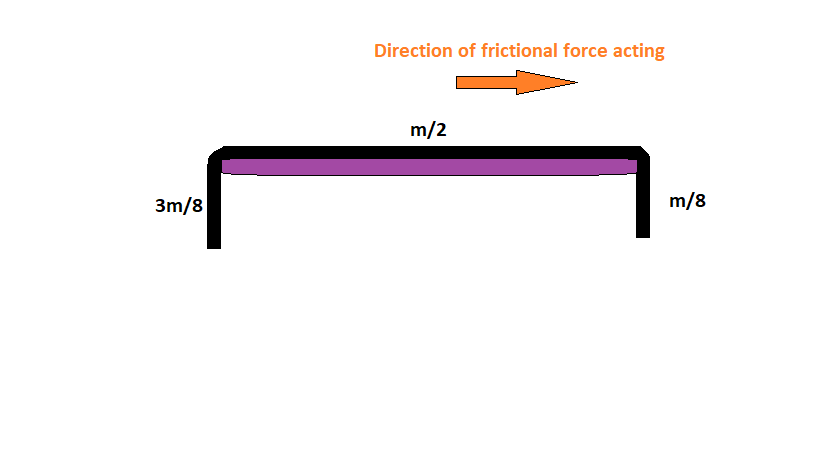Half of the chain is lying on the table. The rest of the chain hangs in equilibrium from both of the ends of the table. The extra length of the hanging chain at one end is 1/8th of the total length of the chain than that hanging at the other end?
Find the minimum value of the coefficient of friction between table and chain.
Find the minimum value of the coefficient of friction between table and chain.
1 Answer
0.5
Explanation:
Let's assume,mass of the total chain is

so,the pulling force of the part of chain
now,frictional force will act in the shown direction as the net tendency of the system is to move along the mass of chain hanging from the edge of the table with mass
so,we can write,
or,
solving we get,

